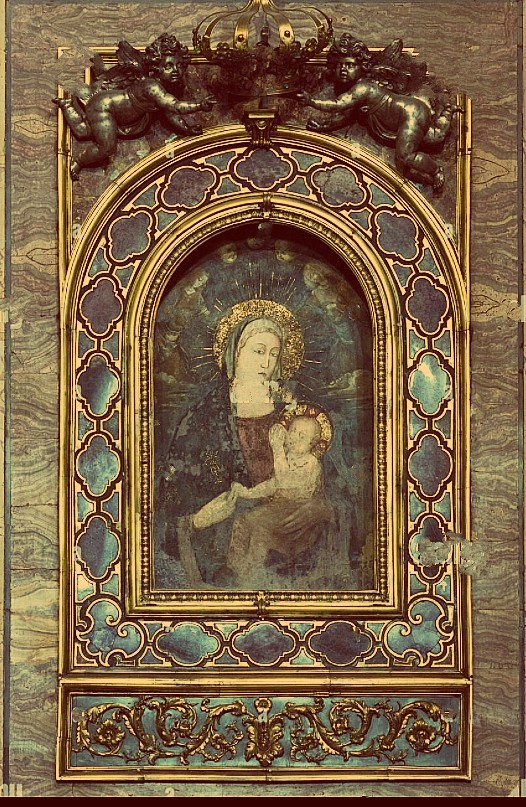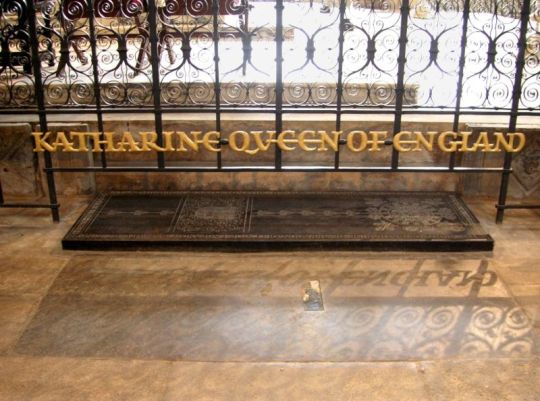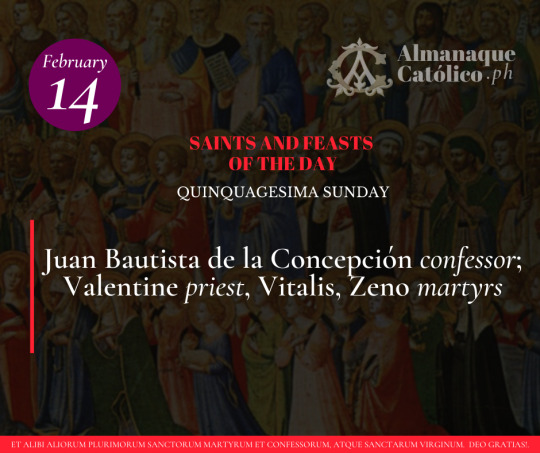#st agatho
Photo

01/13/2023
Suggested by Mike Ciandella on Twitter! Pope St. Agatho's feast day was January 10th, so it was perfect timing. Thanks Mike!
___
JOKE-OGRAPHY:
According to tradition, St. Agatho was elected pope at the very old age of 101. He served for only 3 years before dying (...because he was over a 100 years old), but in that time he managed to squash a whole heresy. In this cartoon, Agatho's mother plays with him and dreams of his bright future, saying he might even be the pope someday. The bitter jerk beside them says, "Not in a hundred years!" When someone says something like, "Not in a [hundred/thousand/million/billion] years, they mean, "That'll never happen." In this cartoon, the miserable hag is trying to be mean, but her ill-intentioned idiom is accidentally prophetic!
#st agatho#pope st agatho#catholic#christian#cartoon#comic#pope#electing impossibly old people to positions of immense global power
470 notes
·
View notes
Text
The Fifth Day Within the Octave of The Epiphany, Madonna del Pianto / Madonna of the Lament or the Weeping Madonna, Rome, Italy (1546) and the Saints for 10 January
The Fifth Day Within the Octave of The Epiphany
Madonna del Pianto / Madonna of the Lament or the Weeping Madonna, Rome, Italy (1546) – 10 January:HERE:https://anastpaul.com/2022/01/10/our-morning-offering-10-january-o-child-so-worthy-of-our-love-i-offer-you-my-heart/
St Aldo of CarbonariSt Pope Agatho (Died 681) Bishop of Rome from 27 June 678
St Arcontius of ViviersBl Benincasa of CavaSt…

View On WordPress
#blpopegregoryX#madonnadelpianto#madonnaofthelament#saints10january#stjohncamillusthegood#stpopeagatho#stwilliamofbourges#theweepingmadonnarome
5 notes
·
View notes
Text

More Saints of the Day January 10
St. William of Bourges
St. Agatho
Bl. Anna of the Angels Monteagudo
St. Dermot
St. Gregory of Nyssa
St. John Camillus the Good
St. Marcian
St. Nicanor
St. Peter Orseolo
St. Peter Urseolus
St. Petronius
St. Saethryth
St. Thomian
2 notes
·
View notes
Text
My calendar, translated to our modern calendar for ease.
January:
• Not included. Started my translation in February.
February:
• 1st - Imbolc
• 3rd-6rd - Lenaia
• 11th - Libation to Aphrodite
• 14th - Valentine’s Day
• 18th - Theogamia
• 20th - Hekate’s Deipnon
• 21st - Noumenia
• 22nd - Agathos Daimon
• 23rd - Veles and Lucifer’s Day of Worship
• 24th - Aphrodite, Hermes, Loki, and Freyja’s Day of Worship
• 25th - Dionysus and Prince Seere’s Day of Worship
• 26th - Ares’ Day of Worship
• 27th - Apollon’s Day of Worship
• 28th - Melinoe and Hades’ Day of Worship
March:
• 1st - Zeus, Hera, and Egeria’s Day of Worship
• 3rd-5th - Anthestaria
• 11th - Libation to Hephaistos
• 15th - Diasia
• 17th - St. Patrick’s Day
• 21st - Ostara
• 22nd - Hekate’s Deipnon
• 23rd - Noumenia
• 24th - Agathos Daimon
• 25th - Veles and Lucifer’s Day of Worship
• 26th - Aphrodite, Hermes, Loki, and Freyja’s Day of Worship
• 27th - Dionysus and Prince Seere’s Day of Worship
• 28th - Ares’ Day of Worship / Elaphebolia
• 29th - Apollon’s Day of Worship
• 30th - Melinoe and Hades’ Day of Worship / Asklepia
• 31st - Zeus, Hera, and Egeria’s Day of Worship
April:
• 1st-8th - Dionysia ta Astika
• 8th - Pandia / Libation to Artemis
• 9th - Easter
• 20th - Hekate’s Deipnon
• 21st - Noumenia
• 22nd - Agathos Daimon / Earth Day
• 23rd - Veles and Lucifer’s Day of Worship
• 24th - Aphrodite, Hermes, Loki, and Freyja’s Day of Worship
• 25th - Dionysus and Prince Seere’s Day of Worship
• 26th - Ares’ Day of Worship / Delphinia
• 27th - Apollon’s Day of Worship
• 28th - Melinoe and Hades’ Day of Worship
• 29th - Zeus, Hera, and Egeria’s Day of Worship
May:
• 1st - Beltane
• 5th - Cinco de Mayo
• 6th - Mounykhia
• 9th - Olympeia
• 13th - Libation to Apollon
• 20th - Hekate’s Deipnon
• 21st - Noumenia
• 22nd - Agathos Daimon
• 23rd - Veles and Lucifer’s Day of Worship
• 24th - Aphrodite, Hermes, Loki, and Freyja’s Day of Worship
• 25th - Dionysus and Prince Seere’s Day of Worship
• 26th - Ares’ Day of Worship / Thargelia
• 27th - Apollon’s Day of Worship / Thargelia
• 28th - Melinoe and Hades’ Day of Worship
• 29th - Zeus, Hera, and Egeria’s Day of Worship
June:
• 8th - Bendideia
• 10th - Libation to Zeus
• 14th - Kallynteria
• 15th - Plynteria
• 18th - Hekate’s Deipnon
• 19th - Noumenia
• 20th - Agathos Daimon
• 21st - Veles and Lucifer’s Day of Worship / Arrephobia / Litha
• 22nd - Aphrodite, Hermes, Loki, and Freyja’s Day of Worship
• 23rd - Dionysus and Prince Seere’s Day of Worship
• 24th - Ares’ Day of Worship
• 25th - Apollon’s Day of Worship
• 26th - Melinoe and Hades’ Day of Worship
• 27th - Zeus, Hera, and Egeria’s Day of Worship
• 30th - Skira
July:
• 2nd - Bouphonia and Dipoleia
• 4th - Independence Day
• 8th - Libation to Athena
• 18th - Hekate’s Deipnon
• 19th - Noumenia
• 20th - Agathos Daimon
• 21st - Veles and Lucifer’s Day of Worship
• 22nd - Aphrodite, Hermes, Loki, and Freyja’s Day of Worship
• 23rd - Dionysus and Prince Seere’s Day of Worship
• 24th - Ares’ Day of Worship
• 25th - Apollon’s Day of Worship
• 26th - Melinoe and Hades’ Day of Worship
• 27th - Zeus, Hera, and Egeria’s Day of Worship
• 30th - Kronia
August:
• 1st - Lammas
• 2nd-3rd - Synoikia
• 10th-17th - Panathenaia ta Megala
• 12th - Libation to Hermes
• 17th - Hekate’s Deipnon
• 18th - Noumenia
• 19th - Agathos Daimon / Herakleia
• 20th - Veles and Lucifer’s Day of Worship
• 21st - Aphrodite, Hermes, Loki, and Freyja’s Day of Worship
• 22nd - Dionysus and Prince Seere’s Day of Worship
• 23rd - Ares’ Day of Worship
• 24th - Apollon’s Day of Worship
• 25th - Melinoe and Hades’ Day of Worship
• 26th - Zeus, Hera, and Egeria’s Day of Worship
September:
• 1st-4th - Eleusinia
• 2nd - Other Major Gods’ Day of Worship
• 6th - Hera Telkhinia
• 9th - Demeter and Persephone’s Day of Worship
• 11th - Zeus Epoptes
• 15th - Hekate’s Deipnon
• 16th - Noumenia
• 17th - Agathos Daimon / Niketeria
• 18th - Veles and Lucifer’s Day of Worship
• 19th - Aphrodite, Hermes, Loki, and Freyja’s Day of Worship
• 20th - Dionysus and Prince Seere’s Day of Worship / Genesios
• 21st-22nd - Mabon
• 21st - Ares’ Day of Worship / Artemis Agrotera
• 22nd - Apollon’s Day of Worship
• 23rd - Melinoe and Hades’ Day of Worship
• 24th - Zeus, Hera, and Egeria’s Day of Worship
• 27th - Demokratia
October:
• 2nd - Epidauria
• 7th - Libation to Hades
• 9th - Feast for Native Ancestors (Indigenous Peoples’ Day)
• 12th - Spirits (Nymphs, Spirits of the Home, etc.) Day of Worship
• 14th - Libation to Poseidon
• 15th - Hekate’s Deipnon
• 16th - Noumenia
• 17th - Agathos Daimon
• 18th - Veles and Lucifer’s Day of Worship
• 19th - Aphrodite, Hermes, Loki, and Freyja’s Day of Worship
• 20th - Dionysus and Prince Seere’s Day of Worship
• 21st - Ares’ Day of Worship / Proerosia
• 22nd - Apollon’s Day of Worship / Oskophoria / Pyanepsia
• 23rd - Melinoe and Hades’ Day of Worship / Theseia
• 24th - Zeus, Hera, and Egeria’s Day of Worship
• 26th-28th - Thesmophoria
• 31st - Halloween
• 31st-2nd - Día De Los Muertos
November:
• 31st-2nd - Día De Los Muertos
• 11th - Libation to Ares
• 14th - Hekate’s Deipnon / Khalkeia
• 15th - Noumenia
• 16th - Agathos Daimon
• 17th - Veles and Lucifer’s Day of Worship
• 18th - Aphrodite, Hermes, Loki, and Freyja’s Day of Worship
• 19th - Dionysus and Prince Seere’s Day of Worship
• 20th - Ares’ Day of Worship
• 21st - Apollon’s Day of Worship
• 22nd - Melinoe and Hades’ Day of Worship
• 23rd - Zeus, Hera, and Egeria’s Day of Worship / Thanksgiving
• 24th - Pompaia
December:
• 9th - Libation to Dionysus
• 13th - Hekate’s Deipnon
• 14th - Noumenia
• 15th - Agathos Daimon
• 16th - Veles and Lucifer’s Day of Worship
• 17th - Aphrodite, Hermes, Loki, and Freyja’s Day of Worship
• 18th - Dionysus and Prince Seere’s Day of Worship / Plerosia
• 19th - Ares’ Day of Worship
• 20th - Apollon’s Day of Worship
• 21st-22nd - Heliogenna
• 21st - Melinoe and Hades’ Worship / Poseidea / Yule
• 22nd - Zeus, Hera, and Egeria’s Day of Worship
• 23rd - Rural Dionysia
• 24th - Christmas Eve / Feast of the Seven Fishes
• 25th - Christmas
12 notes
·
View notes
Text
Markland
Markland is a polity of Albion, situated east of Wales, north of London and Kent, and south of Northumber and Sodrick.
History
Markland originates with Saxon settlements in sub-Roman Britannia, which in the west formed (what would go on to be named) Mearce land "borderland". Compare the related demonym Mierce "people of the border", whence the Latin name Mercia and native Merchman "man from Markland".
The petty kingdom of Anglia was annexed by Markland with the Treaty of Oxford in the late eighth century, at the dawn of the Viking Age. This established the persevering border between the mouths of the Severn and the Tames, and incited renewed influx of people into the petty kingdoms on Borland.
Markland weathered the Viking Age much more successfully than neighbouring Northumber, though much of its eastern coast was settled by Danes; the city of Lincon served as the de facto border of Danish rule for several decades. In part this was the inevitable result of tensions along the Welsh border; even during peacetime Theodric the Awefast maintained substantial levy forces.
The tenth-century Elved Marriage (which took place near the modern city of Leeds) ended hostilities between Markland and Dane forces in the east for almost a century. It is said to have been solemnised over a sandstone block later inlaid into the Redstone Chair, a low-backed wooden throne on which many subsequent monarchs were crowned.
Around the turn of the second millennium, Markland was conquering territory from the northern reaches of Wales (incidentally leading to Pope Agatho's canonisation of the Welsh St David). The perennial conflicts between Markland and Wales would come to be collectively referred to as the Mallor Wars.
The First Drengot Empire of the eleventh and twelfth centuries counted Markland as a major vassal, conquered from the south following the subjugation of Kent by Normandy and Greater Devon in 1029.
The Mallor Wars were reignited after a quiescent period by the martial-minded King Andrew II, with the Sack of Rexam in 1301 during which the original St Brigid's Abbey burned to the ground.
Markland was embroiled in the Wars of Fealty in the late fifteenth and early sixteenth centuries. Tensions over the location and possession of the Redstone Chair boiled over into a conflict that would last forty-one years. Markland conceded several battles to the young Kingdom of Britain in the early years of the wars, culminating in the 1483 Battle of Rexam which expanded the borders of Wales in the north and killed the last Duke of Chestre.
In the final years of the Wars of Fealty, a code known as Thieves' Script was employed by the forces of King Andrew III, apparently adapted from similar systems used by gangs of housebreakers in Nottingham. It is remembered today as a very early precursor of codes like steeplescript or modern one-zeffre encoding.
The poor economic conditions and population displacement in Markland following the Wars of Featly led it to suffer almost twice as many deaths per capita from the Second Great Dying compared to polities like Willemy.
Long contested between Markland and Kent, the city of London found itself independent for one final, lasting time following the Democratic Wars of the mid-eighteenth century.
The spellings of various towns and cities in Markland were rationalised during the Long Peace period of the late eighteenth and early nineteenth centuries (for example, Conster for former Colncester /ˈkɔn.stə/).
The 2010 Œcumen Count, a regular census, recorded that Utter Safford was the secondmost populous city in Markland proper with 4.4 million inhabitants, after the capital of Tommarth.
People
Monarchs
Theodric the Awefast (fl. 800), repeller of several attempted vikings into Markish territory
Oswin the Becoming (fl. 1029), last ruler of an independent Markland before the First Drengot Empire
Andrew II (fl. 1301), who reignited the Mallor Wars with the Sack of Rexam
Andrew III (fl. 1500), ruler of Markland during the latter years of the Wars of Fealty
Authors
Ferris Bewly (fl. 1942), alchemist responsible for the quire 'Modern Developments in Benjamine Detaxion'
Laurent Burnows (fl. 2015), famous for children's series 'Back to Front' and later for the more mature series 'An Inconvenient Armageddon'
Anna and Ralph Highwater (fl. 1930), cowriters of the series of books 'Games for Sorties and Excourses'
Challow Huddresfell (fl. 1956), historian who wrote 'Daughters of the Sea: The Northwestern Isles'
Jason Ridley (fl. 1967), who with others wrote the quire 'A Handbook of Natural Theory'
Dr Harold Westcamp (fl. 1997), who wrote the series of textbooks 'Albick Medicine in the Workshop Decades'
Others
Sarzan Dawkinholm (fl. c19), long-serving and much-lambasted Outland Minister

(Approximate extent of Markland proper in 2000 N.)
3 notes
·
View notes
Text

SAINTS JANUARY 10
POPE ST MILTIADES
Of African origin, Miltiades was Pope at the time of Constantine’s victory over Maxentius – that is, the victory of the Cross over the persecutors of Christianity. Miltiades began the work of reorganizing the Church and Christian places of worship, but died in 314. Jan 10
St. Thomian, 660 A.D. Sometimes called Toiman, Archbishop of Armagh, Ireland, from about 623. He is remembered for a letter he composed to the Holy See concerning the paschal controversy, namely the date to be followed for the celebrating of Easter.
St. Dermot, 6th century. Abbot and founder of a monastery on Innis-Closran Island, Ireland. He is listed also as Diarmis or Diarmaid. Dermot trained St. Kiernan of Clonrnacnois.
St. Saethryth, 660 A.D. Benedictine abbess, also called Sethrida. The stepdaughter of a local king of the Angles, she entered a convent in Gaul (modem France) eventually becoming abbess. Sts. Ethelburga and Ethelfreda were half-sisters.Jan 10
St. Agatho,Roman Catholic Pope. St. Agatho was born c. 577 and was elected to the Roman see in 678. He had been a monk before his election and was well-versed in Latin and Greek. Although the exarch of Ravenna, Theodore, desired independence from Rome, he eventually submitted to Agatho's rule. In 678, Bishop Wilfrid of York, claiming he had been unjustly deposed, appealed to the pope, who ruled that Bishop Wilfrid should be returned immediately to his see. Concerned about the condition of the English church, Agatho sent an envoy to teach the Britons about chant and to report to him on the state of the church. The Sixth Ecumenical Council (680-681) accepted Agatho's definitions of the two wills of Christ, although the pope did not attend the council. Agatho died during a plague in 681.
Feastday Jan10
Bl. Anna of the Angels Monteagudo, was a Dominican mystic of Peru, and she is revered as the second St. Rose of Lima. Feastday Jan.10
BD POPE GREGORY X
After the longest conclave in history, Tebaldo Visconti was elected Pope, and took the name Gregory X. At the time of his election, Tebaldo was on Crusade in the Holy Land, and was not yet a priest. He worked for unity with Orthodox in the Council of Lyons. He died in 1276 and was beatified in 1713. Jan 10
0 notes
Text
Pope Gregory XVI, 1832: Mirari Vos:
6. It is Our duty to lead the flock only to the food which is healthful. In these evil and dangerous times, the shepherds must never neglect their duty [...]
7. Indeed you will accomplish this perfectly if, as the duty of your office demands, you attend to yourselves and to doctrine and meditate on these words: “the universal Church is affected by any and every novelty”[5] and the admonition of Pope Agatho: “nothing of the things appointed ought to be diminished; nothing changed; nothing added; but they must be preserved both as regards expression and meaning.”[6] Therefore may the unity which is built upon the See of Peter as on a sure foundation stand firm.
[5] St. Celestine, Pope, epistle 21 to Bishop Galliar.
[6] St. Agatho, Pope, epistle to the emperor, apud Labb., ed. Mansi, vol. 2, p. 235.
0 notes
Text
Out of the Shadow: Eclipse Experiments
Out of the Shadow: Eclipse Experiments
I’ve waited on making this post because it reflects experiments I had begun with the eclipses of January, and continued on with the July eclipse in Cancer. I began this experiment after having several brainstorms. I knew the eclipses were coming up this year, and they’re hitting pretty sensitive places in my chart. Indeed, I have been paying enough attention to what was going on in my life and in…
View On WordPress
#Agathos Daimon#art#astrology#Austin Coppock#divination#eclipses#enchantment#Kaitlin Coppock#Ketu#magic#PGM#practical enchantment#Rahu#remediation#St Catherine of Alexandria#St Martha
1 note
·
View note
Photo

14th February QUINQUAGESIMA SUNDAY
• The Philippine calendar celebrates today the Feast of St. JUAN BAUTISTA DE LA CONCEPCIÓN, Priest of the Trinitarian Order who would establish a branch of his order which he named the "Order of Discalced Trinitarians."
• N.B.: Despite the endless debate on their legitimacy, the Roman Martyrology gives us the celebration of two Valentines who are both martyrs; one a Roman Priest inscribed in our Philippine calendar and another one, a Bishop of Teramo.
• The pre-1970 Roman Martyrology inscribes Sts. Cyril, Monk & Methodius, Bishop on the 7th of July; but in the liturgical reforms of 1970 assigned them on this day.
AT Rome, on the Flaminian road, in the time of the emperor Claudius, the birthday of blessed VALENTINE, priest and martyr, who after having cured and instructed many persons, was beaten with clubs and beheaded.—Also, at Rome, the holy martyrs VITALIS, Felicula, and ZENO.—At Teramo, St. VALENTINE, bishop and martyr, who was scourged, committed to prison, and as he remained unshaken in his faith, was taken out of his dungeon in the dead of night and beheaded by order of Placidus, prefect of the city.—In the same place, the holy martyrs Proculus, Ephebus and Apollonius, who, whilst watching by the body of St. Valentine, were arrested and put to the sword by the command of the ex-consul Leontius.—At Alexandria, the holy martyrs Bassus, Anthony, and Protolicus, who were cast into the sea.—Also, the holy martyrs Cyrion, priest, Bassian, lector, Agatho, exorcist, and Moses, who perished in the flames and took their flight to heaven.—In the same city, the Saints Denis and Ammonius, who were beheaded.—At Ravenna, St. Eleuchadius, bishop and confessor.—In Bithynia, the abbot St. Auxentius.—At Sorrento, St. Anthony, abbot, who, when the monastery of Monte Cassino was devastated by the Lombards, withdrew into a solitude of the neighborhood, where, celebrated for holiness, he passed calmly to his repose in God. His body is daily glorified by many miracles, and particularly by the deliverance of possessed persons.
And elsewhere many other holy martyrs, confessors and holy virgins.
R: Thanks be to God!
1 note
·
View note
Text
BanG Dream! and its Saints - Morfonica
Another installment done! So to cap off this one, here are the girls of Morfonica!

February 19 - Mashiro Kurata
St. Barbatus of Benevento: 7th century Italian bishop who succeeded Ildebrand in this capacity. He assisted in a church council called by Pope Agatho in Rome in 680 and in 681 attended the Third Council of Constantinople against the Monothelites. The Roman Martyrology lists Barbatus as one of the chief patrons of the city of Benevento, and is also the patron of Cicciano, Castelvenere, Casalattico and Valle dell'Angelo.
December 16 - Touko Kirigaya
St. Adelaide of Burgundy: She was Holy Roman Empress by marriage to Emperor Otto the Great; she was crowned with him by Pope John XII in Rome in 962. She was regent of the Holy Roman Empire as the guardian of her grandson, Otto III. Adelaide had constantly devoted herself to the service of the church and peace, and to the empire as guardian of both; she also interested herself in the conversion of the Slavs. In iconography, she is usually represented in the garb of an empress, with sceptre and crown. Since 14th century, it is also given as an attribute a model church or a ship (with which it is said to have escaped from captivity).
June 16 - Nanami Hiromachi
St. Cettin of Oran: 5th century Irish bishop was a disciple of Saint Patrick. He helped Patrick in evangelizing in Ireland and consecrated him as an auxiliary bishop of Oran. His shrine at Oran, Co. Roscommon was a well known place of pilgrimage, and survived until the end of the eighteenth century.
September 15 - Tsukushi Futaba
Our Lady of Sorrows (Our Lady of Piety, Our Lady of the Seven Sorrows): One of the most popular Marian titles, a popular Roman Catholic devotion and a key subject for Marian art. The Virgin Mary is portrayed in a sorrowful and lacrimating affect, with seven long knives or daggers piercing her heart, often bleeding. Devotional prayers that consist of meditation began to elaborate on her Seven Sorrows based on the prophecy of Simeon in imagery. She is the patron of the Servite order, the Congregation of Holy Cross, and Poland (by Pontifical decree of Pope St. Paul VI).
November 19 - Rui Yashio
St. Raphael Kalinowski: Polish Discalced Carmelite friar, and was a teacher, engineer, prisoner of war, royal tutor, and priest, who founded many Carmelite monasteries around Poland after their suppression by the Russians. He became a Lieutenant in the Russian Military Engineering Corps in 1857. During his post he was responsible for the planning and supervised construction of the railway between Kursk and Odessa. After joining the Carmelite order at Graz, Austria and ordained a priest in 1882, he worked to restore the Discalced Carmelites to Poland, and for church unity, and was a noted spiritual director for both Catholics and Orthodox. He is canonized as a saint by Pope St. John Paul II in November 1991, the first man to be so recognized in the Order of Discalced Carmelites since John of the Cross.
#random stuff#catholic#catholic saints#bang dream#morfonica#mashiro kurata#touko kirigaya#nanami hiromachi#tsukushi futaba#rui yashio
3 notes
·
View notes
Text
Saint of the Day – 10 January – St Pope Agatho (Died 681)
Saint of the Day – 10 January – St Pope Agatho (Died 681) Bishop of Rome from 27 June 678 (at this time over 100 years olf) until his death on 10 January 681. Born in Sicily of Greek parentage, probably in Palermo of which City he is the Patron. Known for his affability and charity, on account of the many miracles attributed to his intercession, he has been styled as “Thaumaturgus or…

View On WordPress
2 notes
·
View notes
Photo

Name Aesthetic for anon. // Agata (Sapphic vibes)
“Agata is a feminine given name derived from the Ancient Greek word ἀγαθός (agathos), meaning good. It was the name of St. Agatha of Sicily, a third-century Christian martyr.”
#name aesthetic#agata#blue#sapphic#wlw#lgbt#lgbtq#lesbian#turquoise#moodboard#aesthetic#water#greek#art
45 notes
·
View notes
Video
youtube
Retrouvez ci-dessous le programme des festivités à St Raphaël. https://ift.tt/3xxbzmq by Résidence AGATHOS
0 notes
Quote
[N]othing of the things appointed ought to be diminished; nothing changed; nothing added; but they must be preserved both as regards expression and meaning.
Pope St. Agatho, Epistle to the emperor (7th century), as quoted in Pope Gregory XVI’s Mirari Vos
2 notes
·
View notes
Text
SAINTS JANUARY 10
St. Saethryth, 660 A.D. Benedictine abbess, also called Sethrida. The stepdaughter of a local king of the Angles, she entered a convent in Gaul (modem France) eventually becoming abbess. Sts. Ethelburga and Ethelfreda were half-sisters.Jan 10
St. Thomian, 660 A.D. Sometimes called Toiman, Archbishop of Armagh, Ireland, from about 623. He is remembered for a letter he composed to the Holy See concerning the paschal controversy, namely the date to be followed for the celebrating of Easter.
St. Dermot, 6th century. Abbot and founder of a monastery on Innis-Closran Island, Ireland. He is listed also as Diarmis or Diarmaid. Dermot trained St. Kiernan of Clonrnacnois.
St. Agatho,Roman Catholic Pope. St. Agatho was born c. 577 and was elected to the Roman see in 678. He had been a monk before his election and was well-versed in Latin and Greek. Although the exarch of Ravenna, Theodore, desired independence from Rome, he eventually submitted to Agatho's rule. In 678, Bishop Wilfrid of York, claiming he had been unjustly deposed, appealed to the pope, who ruled that Bishop Wilfrid should be returned immediately to his see. Concerned about the condition of the English church, Agatho sent an envoy to teach the Britons about chant and to report to him on the state of the church. The Sixth Ecumenical Council (680-681) accepted Agatho's definitions of the two wills of Christ, although the pope did not attend the council. Agatho died during a plague in 681.
Feastday Jan10
Bl. Anna of the Angels Monteagudo, was a Dominican mystic of Peru, and she is revered as the second St. Rose of Lima. Feastday Jan.10
POPE ST MILTIADES
Of African origin, Miltiades was Pope at the time of Constantine’s victory over Maxentius – that is, the victory of the Cross over the persecutors of Christianity. Miltiades began the work of reorganizing the Church and Christian places of worship, but died in 314. Jan 10
BD POPE GREGORY X Jan 10
After the longest conclave in history, Tebaldo Visconti was elected Pope, and took the name Gregory X. At the time of his election, Tebaldo was on Crusade in the Holy Land, and was not yet a priest. He worked for unity with Orthodox in the Council of Lyons. He died in 1276 and was beatified in 1713. Jan 10
0 notes
Text
21 Octobre 2019
Abbot and disciple of St. Anthony the Great, companion of St. Hesychius. He was born in Tabatha, Palestine, and was educated in Alexandria, Egypt. He stayed with St. Anthony in the desert there ...
More Saints of the Day St. Hilarion St. Agatho St. Astericus St. Berthold St. Cilinia St. Condedus St. Dasius St. Gaspar St. Gebizo Bl. Giuseppe "Pino" Puglis St. Hugh of Ambronay St. John of Bridlington Bl. Josephine Leroux St. Laura of Saint Catherine of Siena St. Maichus St. Maurontus Bl. Nicolas Barre St. Tuda St. Ursula St. Viator St. Wendolinus
0 notes